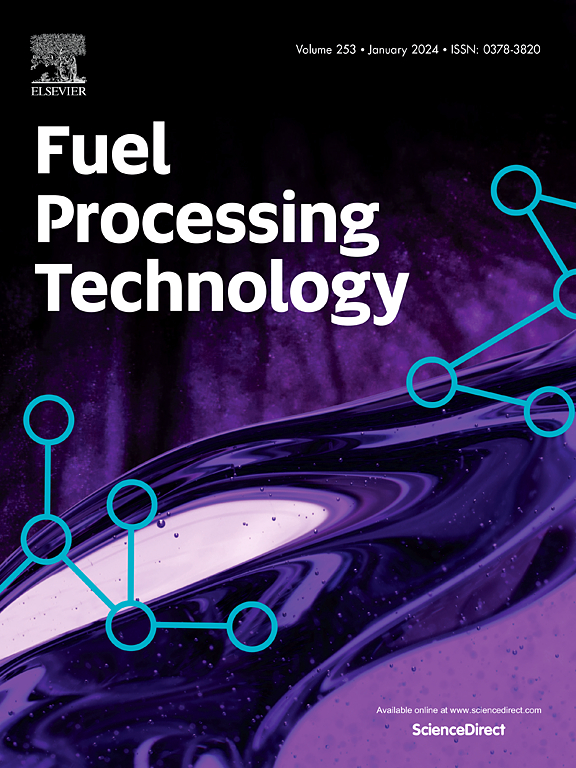褐煤与湖泊沉积物共燃及污染物排放特征
IF 7.7
2区 工程技术
Q1 CHEMISTRY, APPLIED
引用次数: 0
摘要
湖泊沉积物是一种高含水率的固体废物,携带大量的水污染物,对环境和城市景观产生重大影响。湖泊沉积物的有效管理已成为一项需要立即注意的重大挑战。本文重点介绍了混合燃烧的特点及其污染物排放。采用热重法研究了不同比例湖泊沉积物与煤混合燃烧的燃烧特性。实验阐明了多种因素对NO和so2浓度变异性的影响。从微观角度分析了反应残留的底渣及其排放浓度变化的原因。结果表明,适当比例(< 20%)的混合湖底泥有利于煤的燃烧。NO和SO2随河床温度、湖泊沉积物混合比(5% ~ 15%)和粒径的增加而降低。随着床层温度的升高,颗粒表面熔化,减少了孔隙结构和反应位点,从而减少了污染物的产生。当混合比超过15%时,NO增加,SO2减少。钙基物质对NO的催化作用不大,但对SO2仍有一定的催化作用。较大的颗粒会促进其表面NO的分解。本文章由计算机程序翻译,如有差异,请以英文原文为准。
The co-combustion and pollutant emission characteristics of lignite and lake sediment
Lake sediment is a high moisture solid waste that carries a large amount of water pollutants, significantly impacting the environment and urban landscape. The efficient management of lake sediment has emerged as a critical challenge requiring immediate attention. This paper focuses on the characteristics of co-combustion and its pollutant emissions. The combustion characteristics of mixed combustion of lake sediment and coal in different proportions were obtained by the thermogravimetric method. Experiments elucidated the influence of diverse factors on the variability of NO and SO₂ concentrations. The remaining bottom residue of the reaction and the reasons for the changes in emission concentration are analysed from a microscopic perspective. Results indicate that the appropriate proportion (<20 %) of mixed lake sediment promotes coal combustion. NO and SO2 decrease with increased bed temperature, lake sediment mixing ratio (5 %–15 %), and particle size. As the bed temperature increases, the particle surface melts, reducing the pore structure and reaction sites, thereby reducing the generation of pollutants. When the mixing ratio exceeds 15 %, NO increases while SO2 decreases. Calcium based substances have little catalytic effect on NO, but are still effective for SO2. Larger particles will promote the decomposition of NO on their surface.
求助全文
通过发布文献求助,成功后即可免费获取论文全文。
去求助
来源期刊

Fuel Processing Technology
工程技术-工程:化工
CiteScore
13.20
自引率
9.30%
发文量
398
审稿时长
26 days
期刊介绍:
Fuel Processing Technology (FPT) deals with the scientific and technological aspects of converting fossil and renewable resources to clean fuels, value-added chemicals, fuel-related advanced carbon materials and by-products. In addition to the traditional non-nuclear fossil fuels, biomass and wastes, papers on the integration of renewables such as solar and wind energy and energy storage into the fuel processing processes, as well as papers on the production and conversion of non-carbon-containing fuels such as hydrogen and ammonia, are also welcome. While chemical conversion is emphasized, papers on advanced physical conversion processes are also considered for publication in FPT. Papers on the fundamental aspects of fuel structure and properties will also be considered.
 求助内容:
求助内容: 应助结果提醒方式:
应助结果提醒方式:


